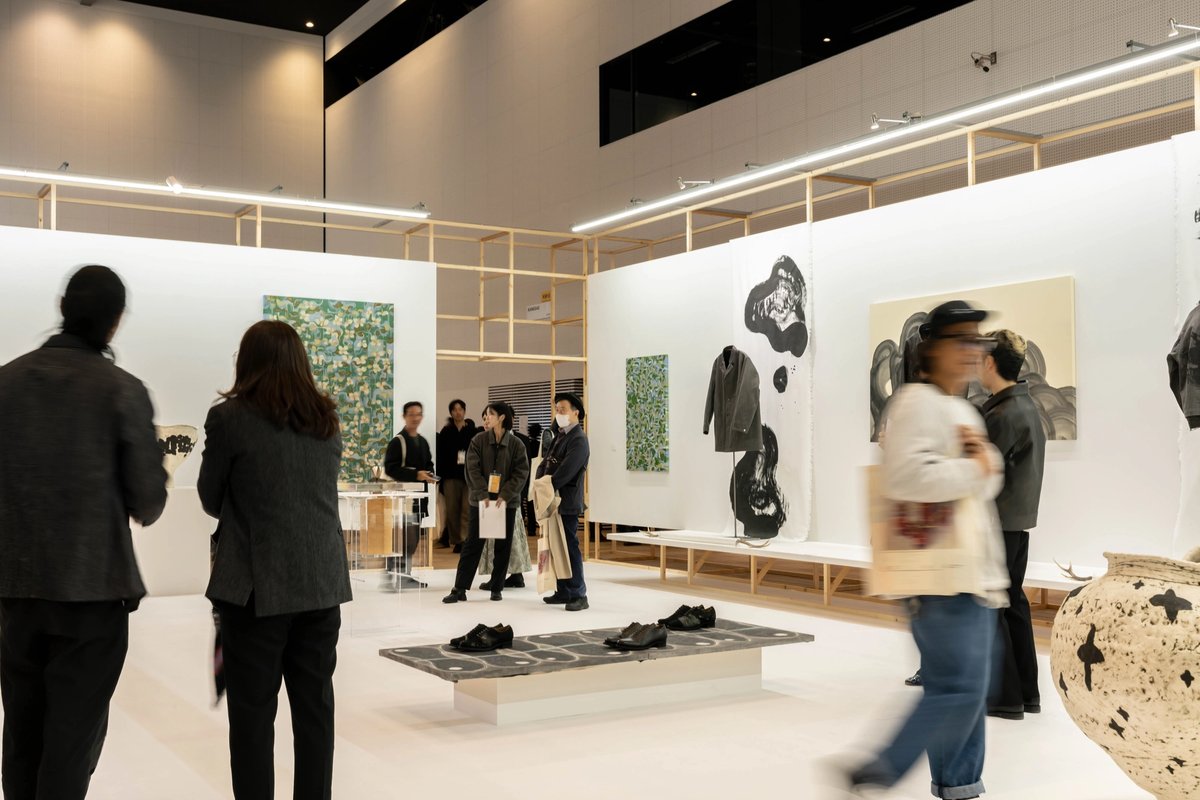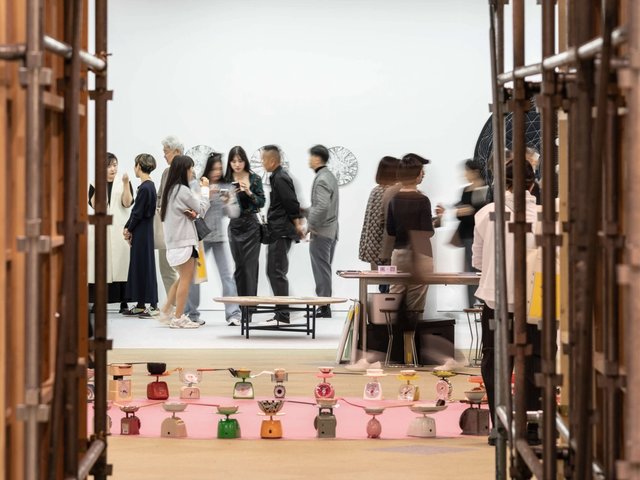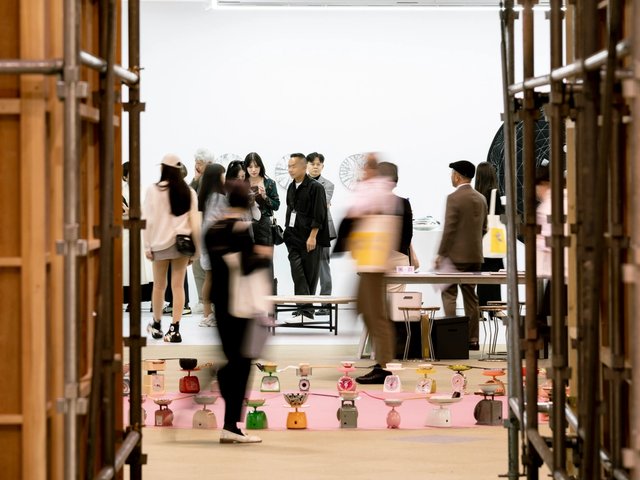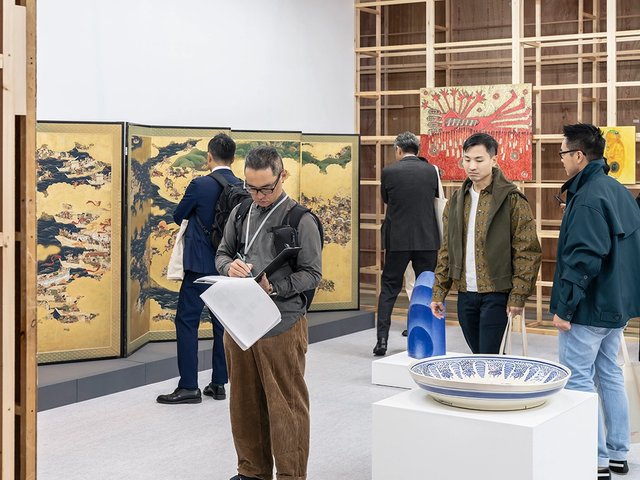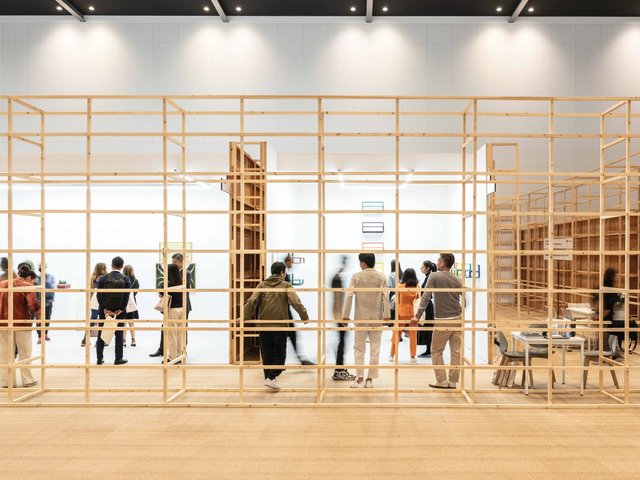Art Collaboration Kyoto (ACK), the fair launched in 2021 to build ties between Japanese and international galleries, opened its fifth edition this week (until 16 November) at the Kyoto International Conference Center (ICC Kyoto). The fair has grown steadily despite economic headwinds and an increasingly crowded Asian fair calendar, welcoming a record 72 galleries, 36 of which are from overseas.
Beyond the main venue, ACK continues to distinguish itself through its integration with Kyoto’s cultural and architectural landscape. A number of special exhibitions are held across historic sites in the city: Sadie Coles HQ presents an Isabella Ducrot solo show at Kousei-in Temple; Kiang Malingue stages Carrie Yamaoka’s first solo exhibition in Japan at Manshu-in; and Ryosoku-in Temple hosts an exhibition of new works by Shio Kusaka and Jonas Wood, co-organised with David Kordansky Gallery.
“What attracted me most is the programming that takes place outside the main fair venue,” says Lorraine Kiang Malingue, whose gallery is participating in ACK for the first time. “These off-site exhibitions can be incredibly stimulating for our artists, offering contexts and encounters they wouldn’t experience elsewhere.”
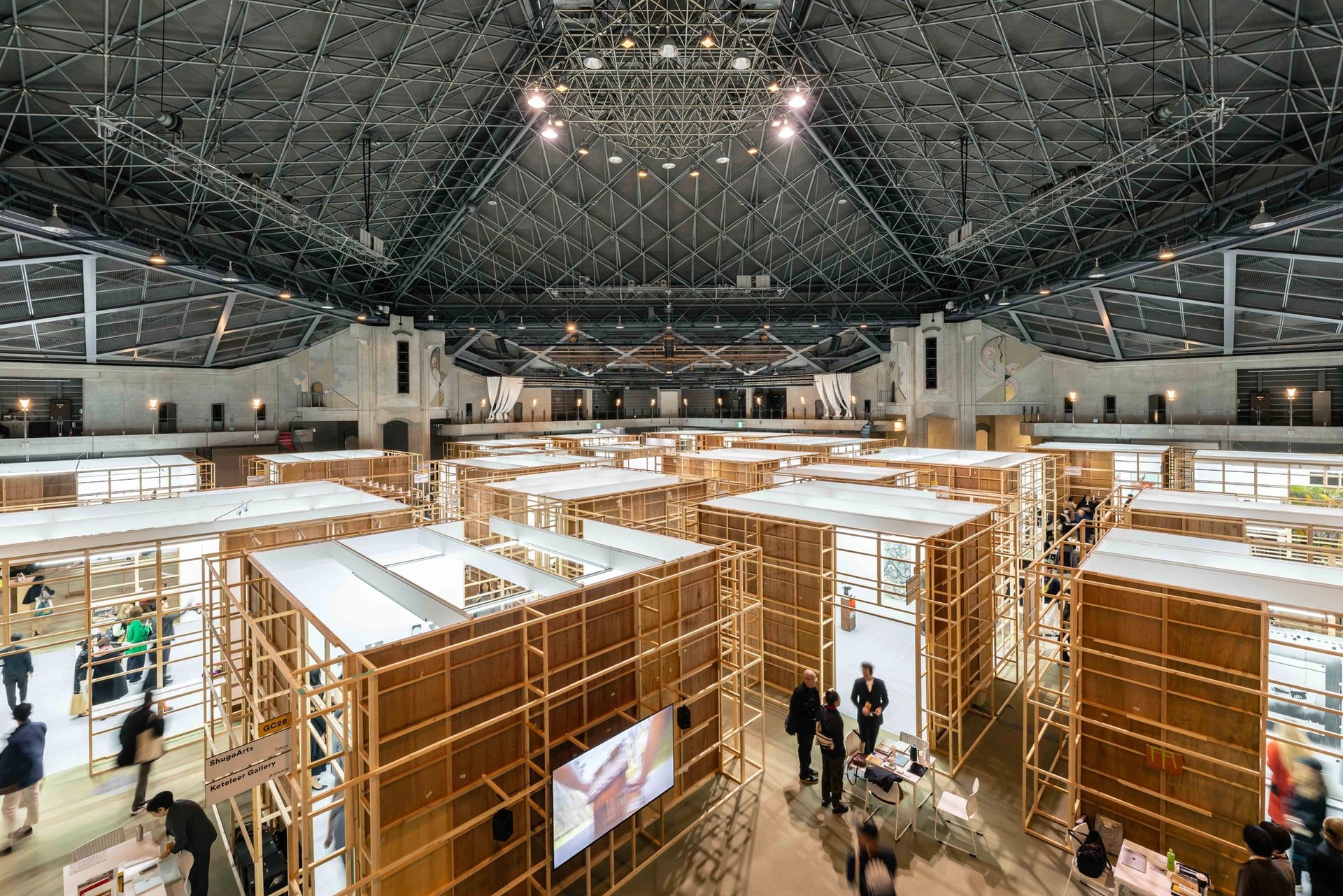
The Kyoto International Conference Center (ICC Kyoto)
At ICC Kyoto, Kiang Malingue shares a booth with Tokyo’s SCAI The Bathhouse, presenting works by Cho Yong-Ik, Su-Mei Tse and Carrie Yamaoka, priced between $7,500 and $18,000. “ACK’s model—where international galleries participate by invitation from Japanese galleries—offers a valuable entry point for galleries looking to approach the Japanese market.”
Tokyo gallery KAYOKOYUKI, which made its debut at Art Basel in Basel earlier this year and is considered one of Tokyo’s most closely watched young galleries, has participated in ACK since its inaugural edition and this year shares a booth with Chapter NY. On the opening day, the gallery sold five of eight paintings by Munehiro Yoshimura, priced between ¥240,000 and ¥1.2m.
“The atmosphere is really wonderful—very warm,” says the fair's founder Kayoko Yuki. “People are relaxed here. Many international galleries come to Kyoto as part of a trip, so it doesn’t feel overly sales-driven. Even without pushing, we can still make meaningful connections and have really valuable experiences.”
Other exhibitors also praised the fair’s laid-back atmosphere. “ACK has a much more relaxed rhythm,” says Malik Al-Mahrouky, a partner at Kurimanzutto. “People don’t just glance and walk away; they stay five or ten minutes. There’s a healthy sense of time here.”
Returning for its second year, Kurimanzutto presented a solo exhibition by Wang Shui in the fair’s Kyoto Meetings section, dedicated to artists with ties to the region. Six of the eight works sold on the first day, priced from $30,000 to $55,000.
For its third year at ACK, Mendes Wood DM, which has locations in São Paulo, Paris, Brussels and New York, partnered with Kyoto’s Shibunkaku. The gallery placed four works on opening day—including pieces by Daniel Steegmann Mangrané and Bendt Eyckermans—with prices ranging from €18,000 to €280,000.
“We’re really starting to see the results of building a relationship with Japan,” says co-founder Matthew Wood. “These things take time. But once you establish that connection, it begins to grow in a very organic way.”
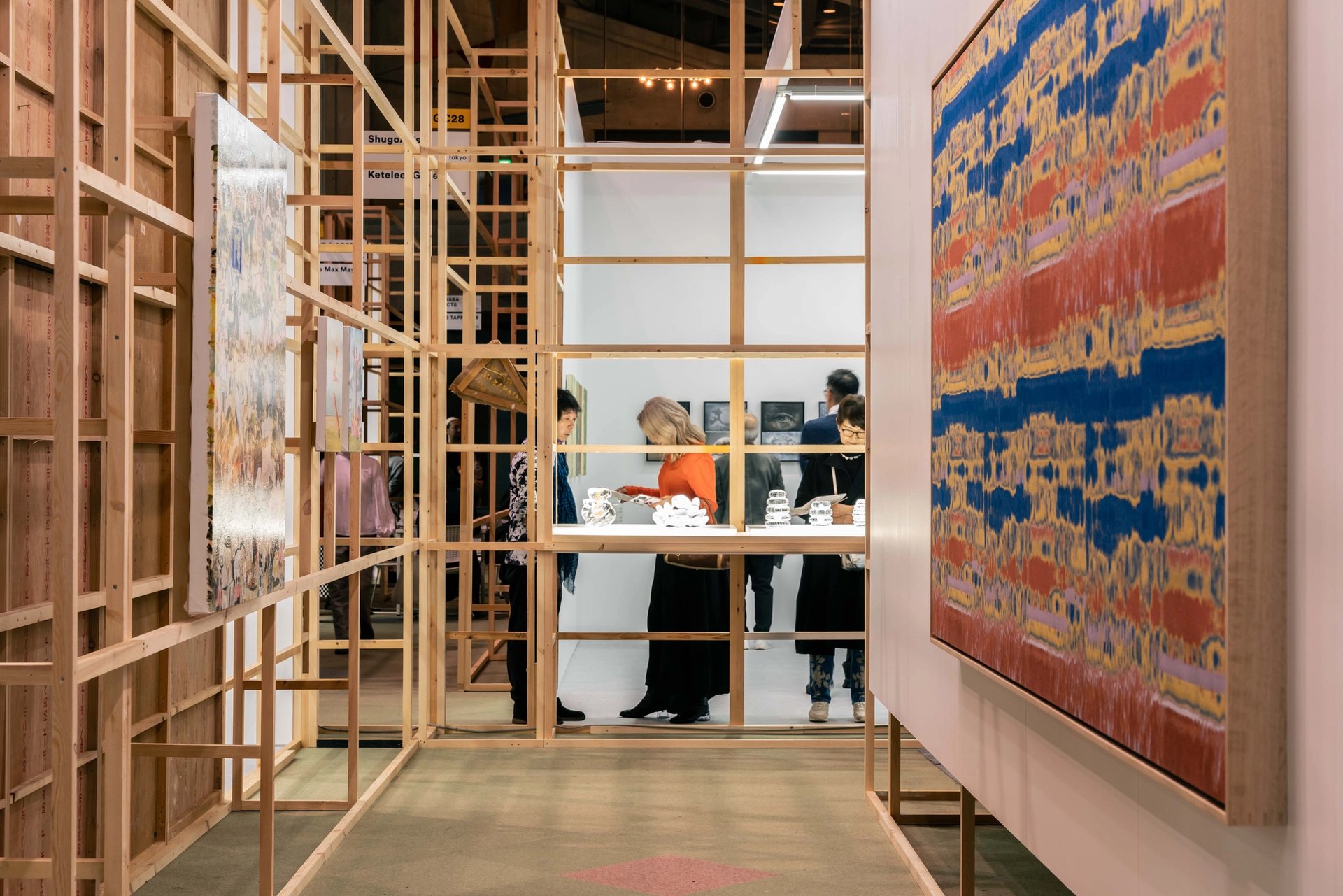
Many Japanese galleries note that ACK’s audience has grown noticeably more international with each edition. Tokyo gallery TARO NASU returned to the fair with one of its most high-profile collaborations: a joint booth with New York blue-chip Gladstone Gallery, featuring works by Matthew Barney, Precious Okoyomon, Rachel Rose, Anicka Yi, Simon Fujiwara and Mika Tajima. Sales were brisk on the first day: a work by Tajima sold for $132,000, and two works by Okoyomon sold for $11,000 and $30,600.
“It’s a promising start,” says Masako Hosoi, TARO NASU’s director. “But what stands out to me is how international the audience has become. We’ve always seen a mix of countries, but this year feels even more global.”
Tokyo-based CON_’s director and co-founder Hisatomo Kato also observes this shift: “ACK feels like the only fair in Japan where the global art community truly gathers. There’s a strong sense of anticipation around that.”
Founded in 2022, CON_ is one of the youngest participants at the fair. This year, it partnered with South Korea’s ARARIO GALLERY, presenting works by Yukino Yamanaka, Lim Nosik, and Noh Sangho. The gallery sold two paintings by Yamanaka on the opening day, priced at $4,500 and $6,000.
Some Japanese galleries, however, reported slower sales. ShugoArts, founded by Shugo Satani, sold three paintings by Kyoto-based artist Rina Matsudaira—including two pre-sold works—priced between $1,000 and $2,000. While sales were more modest, Satani emphasises the fair’s distinctive character: “ACK is a type of fair that probably couldn’t exist in Tokyo. As a place to present the kind of art we value, it feels very comfortable and very right for us.”
Another newcomer this year was Space Un, a Tokyo gallery founded in 2024 and dedicated to contemporary African art. The gallery partnered with Abuja-based Retro Africa, bringing works by Dzidefo Amegatsey, Serigne Mbaye Camara, Ugo Ahiakwo and Myles Igwebuike. Although no sales were recorded on the opening day, director Naoki Nakatani emphasised the strategic importance of participating:
“For us, it’s important to build a presence in Japan—not just in Tokyo. ACK is a great platform because it introduces our artists to audiences beyond Tokyo, especially in western Japan.”
This year, ACK’s dates overlap with Shanghai Art Week, where ART021 and West Bund Art & Design both run from 13–16 November. “Despite the timing overlap, we’ve seen a strong turnout from mainland Chinese visitors,” says Yukako Yamashita, ACK’s fair director.
She notes that Asia’s increasingly saturated art-fair calendar may require closer coordination among cities: “It’s time to think more broadly about how collectors can move efficiently across Asia. We’re in good communication with our counterparts in Shanghai, and I believe we’ll be able to build a cooperative relationship moving forward.”
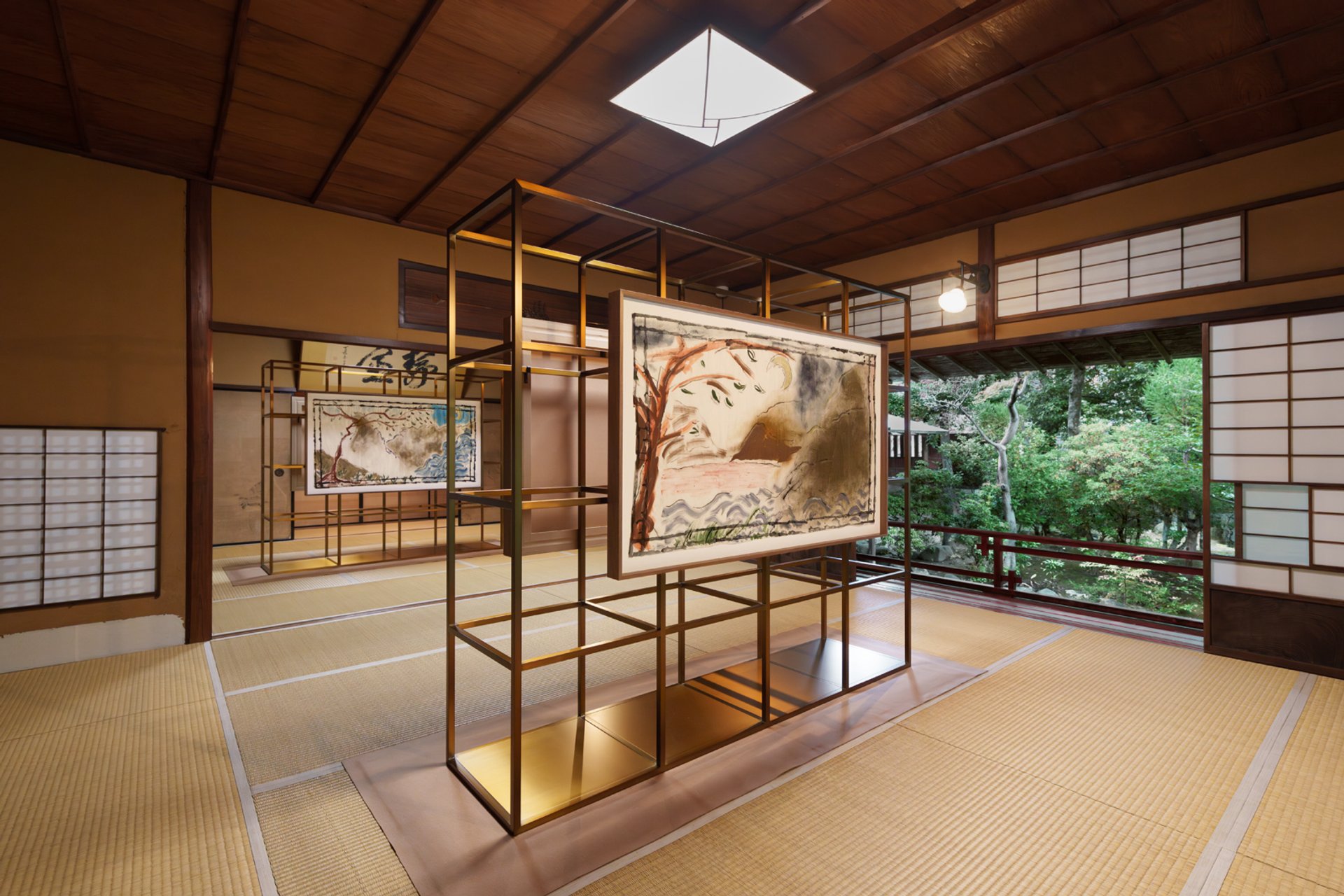
Installation view, Isabella Ducrot, Incongruous, Kōseiin Temple Kyoto
© Isabella Ducrot. Courtesy the Artist and Sadie Coles HQ, London. Photo:
Mitsuru Wakabayashi
Yamashita also highlights a notable rise in visitors from Taiwan, South Korea, and Southeast Asia, particularly Indonesia. In 2024, ACK launched a reciprocal VIP collector exchange with Art Jakarta, sending around ten collectors to each other’s fairs annually.
This year, ACK expanded its regional partnerships through a collaboration with the newly established Bangkok Kunsthalle to launch the Bangkok Collaborate Kyoto Fellowship (BCK Fellowship), aimed at supporting emerging artists.
For Yamashita, these initiatives reflect a broader philosophy: “An art fair should serve not only as a market, but also as a platform for cultural exchange. It’s about building genuine relationships over years and cultivating communities with care.”
At the same time, she stresses that ACK’s identity must remain rooted in its location: “It’s essential that the fair maintains a clear sense of why it takes place in Japan—and in Kyoto specifically. We want to offer experiences that can only happen here, through encounters with local galleries, Japanese artists, and Kyoto’s unique cultural setting. Supporting these local participants is crucial to our mission.”
Looking ahead, Yamashita hopes ACK will become a long-term anchor in the region: “Our aim is to create a fair that values this sense of locality, yet becomes a familiar and anticipated fixture on the calendars of collectors across Asia—not out of obligation, but because they genuinely enjoy being part of it.”


